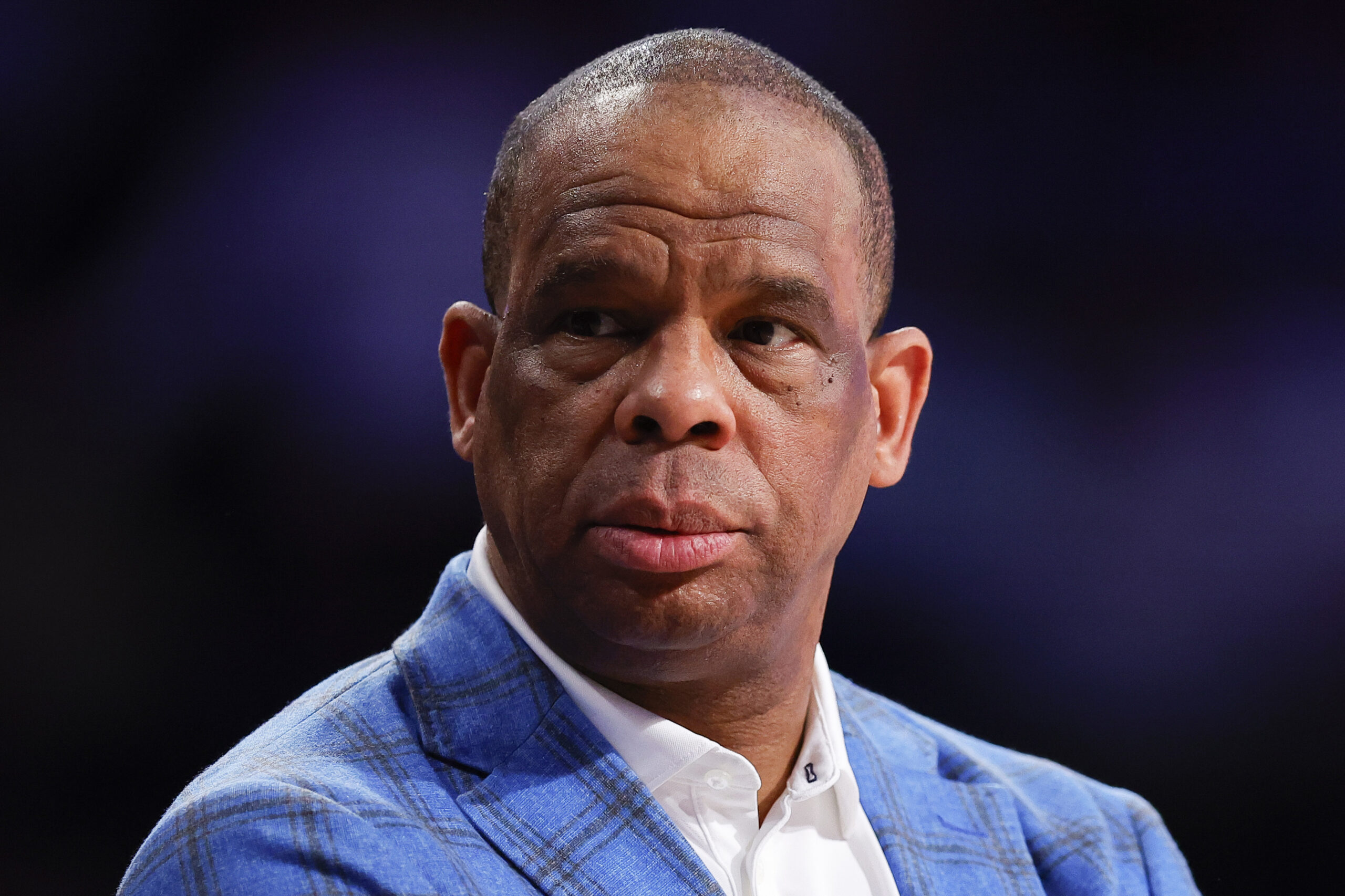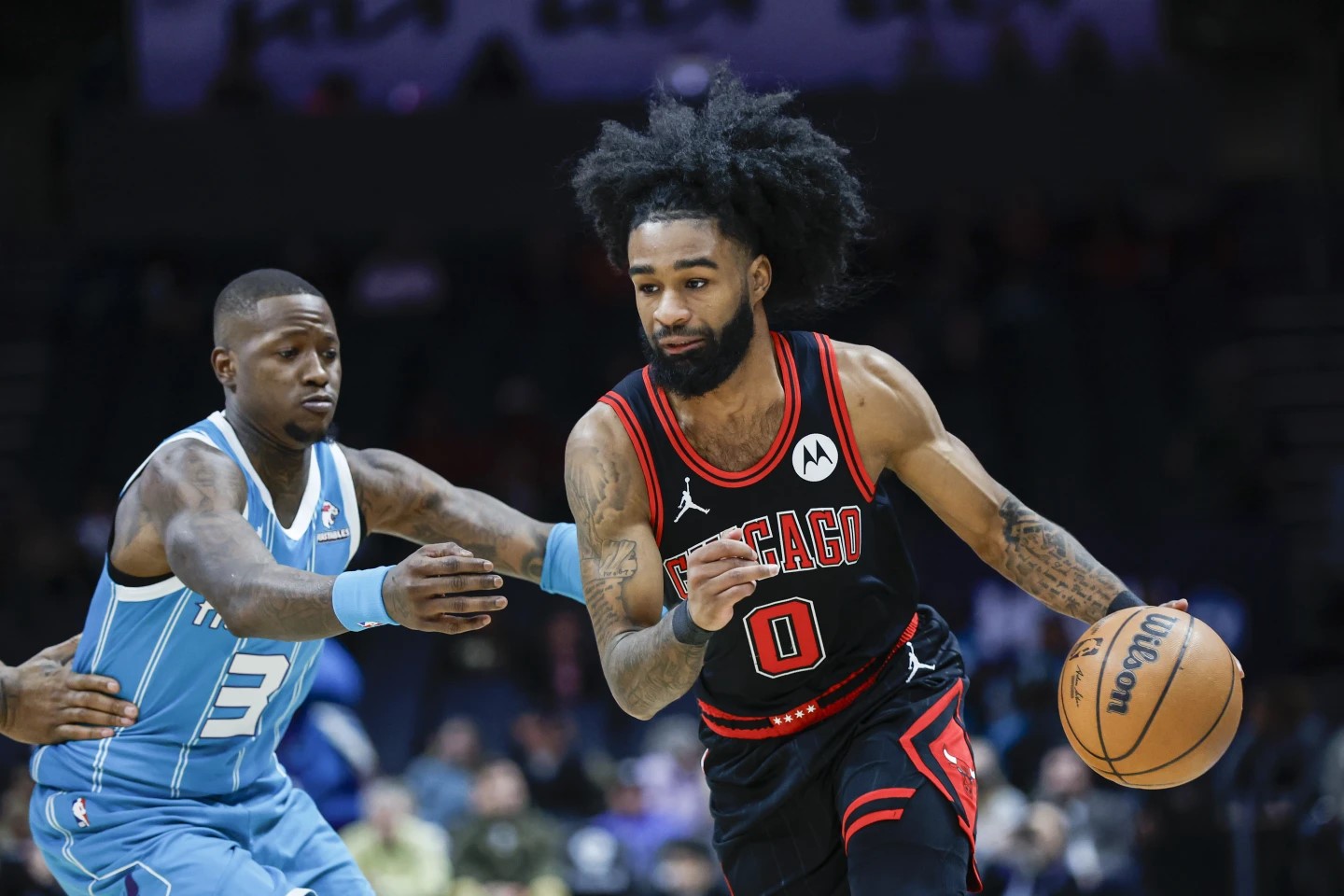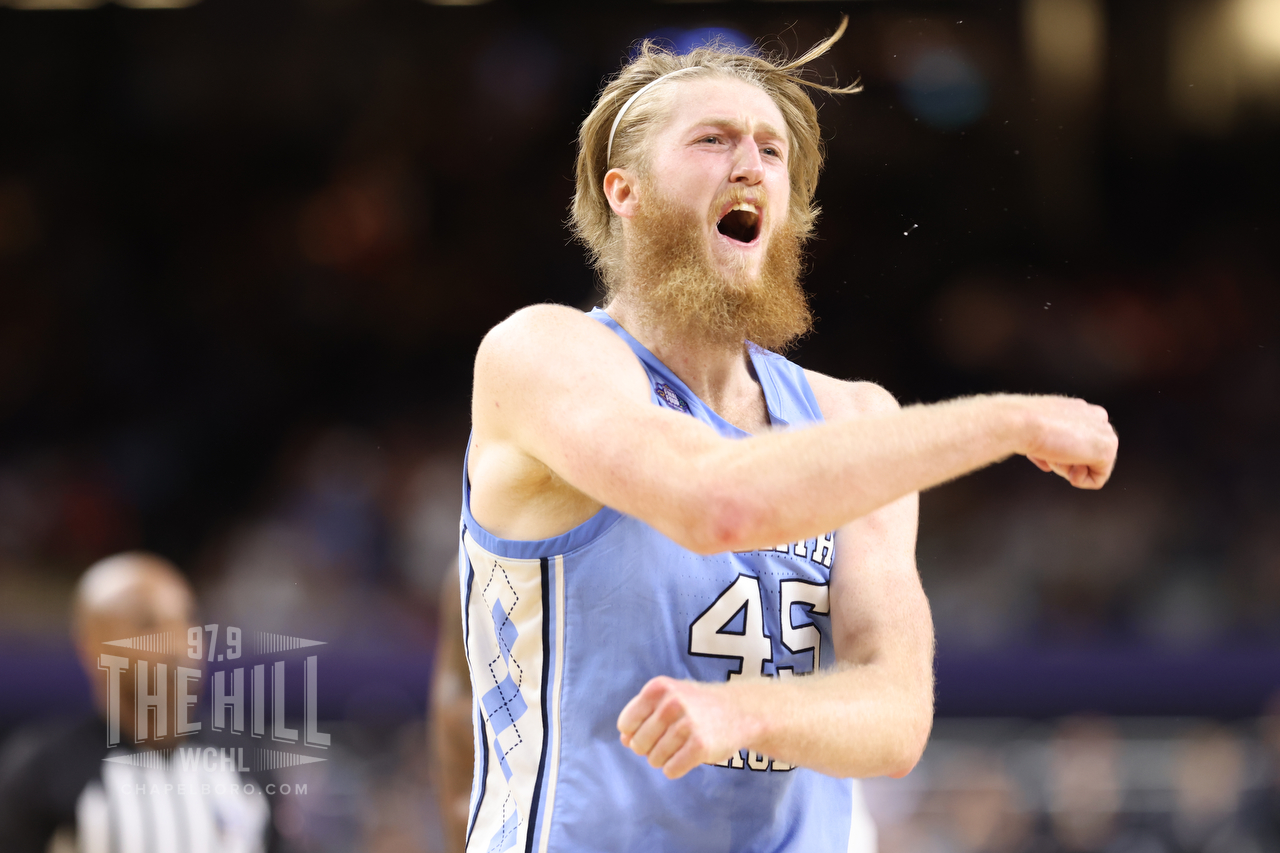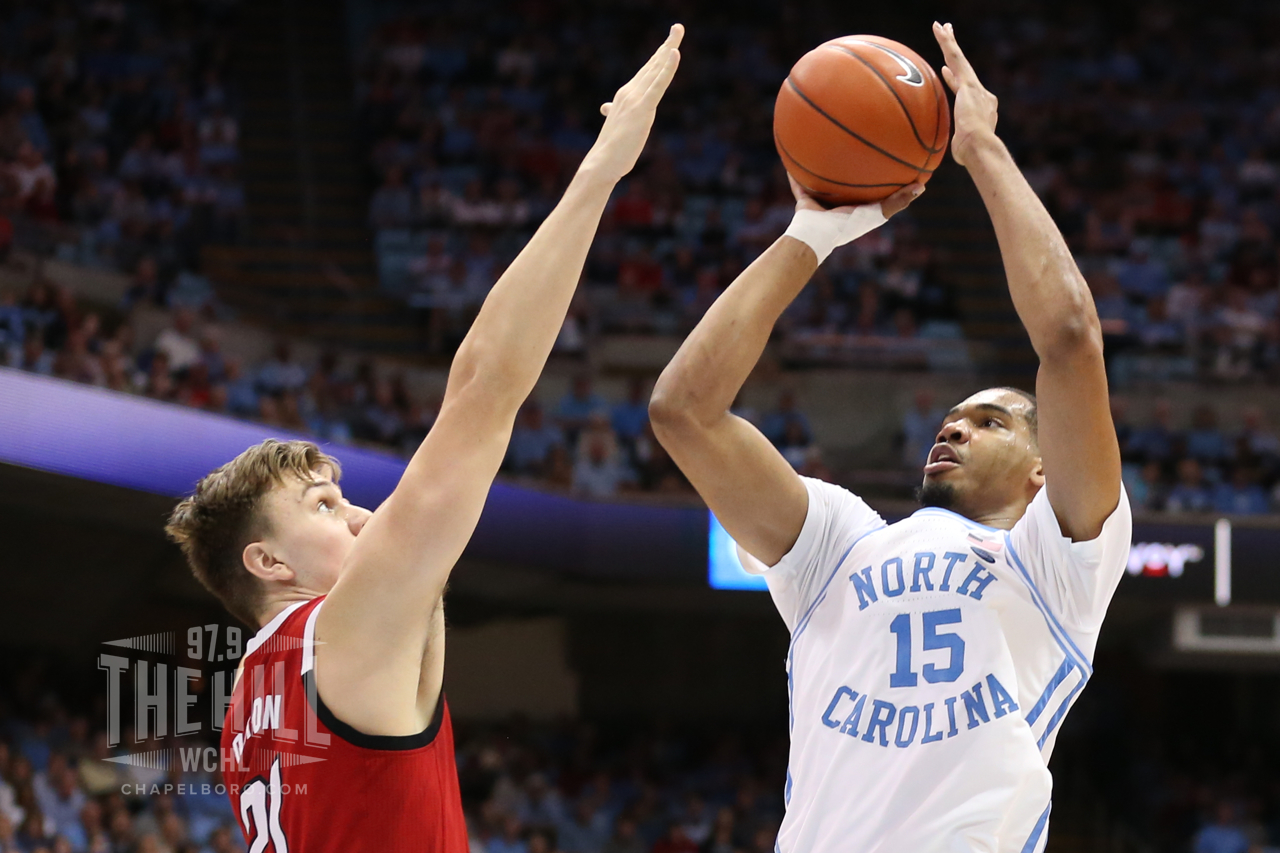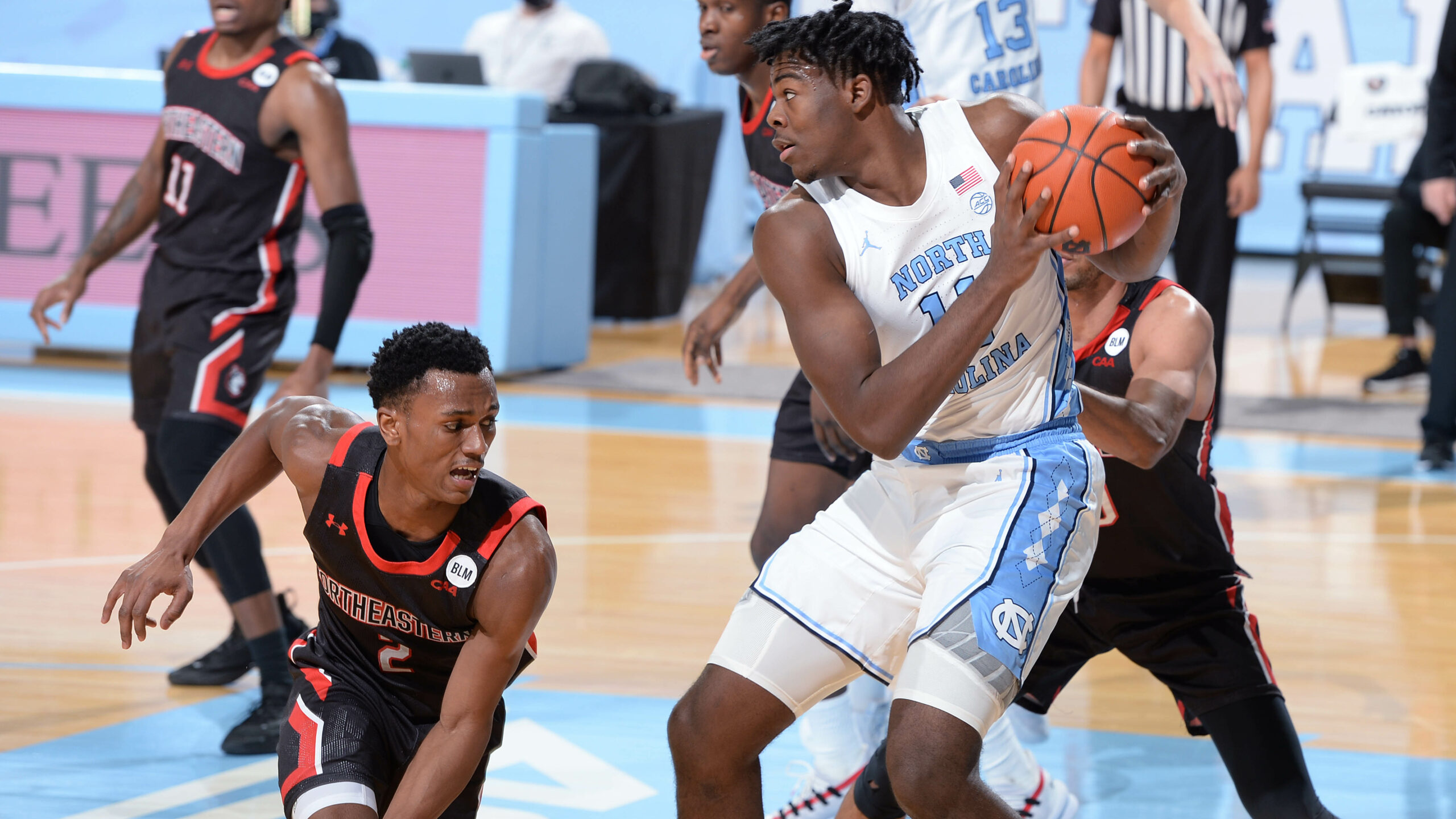How One Slow Spring, An Evolving Internet Led To My Ongoing NCAA/NBA Draft Opus
By David Glenn
Do you know the old saying about necessity being the mother of invention, or the one about how timing is everything, or maybe the one about curiosity killing the cat?
Well, I have a story for you.
It involves college basketball, March Madness, the NBA, the professional basketball draft, a young person (me!) in his 20s trying to decide which of his parallel careers, sports journalism or the legal profession, should be his primary (or even exclusive) focus, and what turned out to be — even 26 years later — one of his more memorable journalistic journeys.
In 1996, I had been covering college sports, most intensely the Atlantic Coast Conference, for almost a decade. Two years earlier, amidst graduating from the UNC School of Law, passing the bar exam on my first try (whew!) and beginning a multi-decade legal practice, I also pursued a deeper dive into my career as a sports writer/editor, taking a long-standing sports newsletter and turning it into what has been known for almost 30 years now as the ACC Sports Journal.
In the mid- and late 1990s, of course, the internet changed the world in countless ways. While our twice-a-month ACC Sports Journal magazine continued to ascend toward the peak of its popularity, with its extremely rare (at the time) combination of basketball, football, recruiting and insider-type coverage, the primitive versions of our website (which soon became the full-blown ACCSports.com) needed fresh content, beyond and between what appeared in print.
This is where those adages about necessity, timing and curiosity really came into play.
Necessity: In my first eight years covering the ACC, starting with the 1987-88 season, at least one team from the conference made the Final Four every time. In fact, from 1988-95, either Duke or UNC (two teams I personally covered closely) made the national semifinals each year — famously, both were there in 1991 — and of course that dynastic duo cranked out back-to-back-to-back NCAA titles in 1991 (Duke), 1992 (Duke) and 1993 (UNC). Such developments provided plenty of material for ACC writers to dissect and discuss well into April every year, and when no ACC team made the Final Four in 1996, there was an odd, gaping hole in that regard.
Timing: Had this sort of thing happened in the magazine-only days, prior to the explosion of the internet, there would not have been the same necessity to find fresh, creative content between print editions. Similarly, from a personal perspective, I was not yet a husband or father. (That changed in 1998 and 1999, respectively.) Putting aside the details of my personal lifestyle in 1996 — insert your preferred punchline here — I had not yet entered an intense two-decade stretch (2000-2020) that, looking back now, didn’t leave much time for just-for-fun journalism.
Curiosity: While following the ACC-less Final Four in 1996, I heard or read that coach Bob Knight’s 1987 Indiana team was the most recent example of a college team winning the NCAA title without having at least one future first-round NBA draft pick on its roster. That single fact stuck in my brain the way poppy seeds or spinach might get stuck in one’s teeth.
Fortunately, curiosity didn’t kill this cat. Instead, it led to my deep-dive research on the amazing, undeniable, eight-decades-long connection between NCAA champions and the NBA draft, which has led to a veritable potpourri of fun emails, inquiries, follow-ups, freelance writing relationships and regular radio/TV appearances for 26 years running.
Although research was more complicated in 1996, largely because the internet had not yet become anything close to what it is today, it piqued my interested further when I remembered that the 1987 Hoosiers (that “last team to win the NCAA title without a future first-round NBA draft pick”) actually had a future NBA guard named Steve Alford. With a quick 1996-style internet search, I learned that, sure enough, Alford was the 26th pick of the 1987 NBA draft.
Both in 1996 and today, of course, if you’re the 26th pick of the NBA draft, you WERE/ARE — by definition — a first-round pick. There are 30 NBA teams now, so there are 30 first-round selections. In 1987, when Alford entered the professional ranks, there were only 23 NBA teams, so there were only 23 first-round selections.
My logical, recent-law-school-grad brain wondered: If Alford really was, by the standards of both 1996 (when I wrote my first article on this topic) and today, the equivalent of a first-round NBA draft pick, then which college team really was the last to win the NCAA title without someone of that sort? In other words, if you used the phrase “top-30” draft pick, rather than “first-round” draft pick, how far back would you have to go to find the new answer to that intriguing March Madness question, whether you consider it trivial or something more?
While I will save more of this unforgettable (for me, at least!) story for next time, below is a sample of my research going all the way back to 1955.
Included in this throw-back part of the list, of course, are the 1957 Tar Heels, who beat legendary big man Wilt Chamberlain and Kansas in triple overtime to capture the NCAA title. While that Carolina team had less of an “NBA factor” (see below) than virtually any other men’s basketball national champion since the creation of the NBA, even it had four of its five starters (see below) selected among the top 30 picks in the NBA draft.
In this multi-part series, exclusively here on Chapelboro, I gradually will provide additional data in these same categories all the way through the Kansas team that recently edged UNC in the 2022 national championship game.
When one or two Jayhawks (senior guard Ochai Agbaji is a lock, and junior guard Christian Braun has a chance) are chosen in the first round of the June 23 NBA draft, it will continue a fascinating streak.
Since the creation of a professional basketball draft in the United States, every single NCAA champion — 75 in a row! (1947-2022, with no champion crowned in the 2020 COVID campaign) — has had at least one future top-30 NBA draft pick (the equivalent of a modern first-round selection) on its roster at the time it captured the championship.
Back in 1996, when I started this research, I went back exactly 50 years, to “only” 1946, even though the first NCAA Tournament was in 1939. Why? Because in 1946, college basketball wasn’t integrated yet, the NBA wasn’t called the NBA yet (it was the Basketball Association of America), and there was no such thing as a pro basketball draft. That started in 1947.
TOP-30 NBA PICKS ON NCAA CHAMPIONS (1955-69)
1969 UCLA
Head Coach: John Wooden
Starters Who Became Top-30 NBA Picks (4): senior C Lew Alcindor (#1), sophomore F Sidney Wicks (#2), sophomore F Curtis Rowe (#11), junior G John Vallely (#14)
Backups Who Became Top-30 NBA Picks (1): sophomore C Steve Patterson* (#18)
NBA Players/Games (6/3,656): Alcindor (1,797), Wicks (769), Rowe (618), Patterson (350), Vallely (100), senior F Lynn Shackelford^ (22)
1968 UCLA
Head Coach: John Wooden
Starters Who Became Top-30 NBA Picks (2): junior C Lew Alcindor (#1), junior PG Lucius Allen (#3)
Backups Who Became Top-30 NBA Picks (0): none
NBA Players/Games (5/2,662): Alcindor (1,797), Allen (745), senior F Mike Lynn (52), senior F Edgar Lacey (46), junior F Lynn Shackelford^ (22)
1967 UCLA
Head Coach: John Wooden
Starters Who Became Top-30 NBA Picks (2): sophomore C Lew Alcindor (#1), sophomore PG Lucius Allen (#3)
Backups Who Became Top-30 NBA Picks (0): none
NBA Players/Games (3/2,564): Alcindor (1,797), Allen (745), sophomore F Lynn Shackelford^ (22)
1966 Texas Western (now UTEP)
Head Coach: Don Haskins
Starters Who Became Top-30 NBA Picks (1): sophomore C Dave Lattin^ (#10)
Backups Who Became Top-30 NBA Picks (0): none
NBA Players/Games (2/292): Lattin (268), sophomore PG Willie Worsley^ (24)
1965 UCLA
Head Coach: John Wooden
Starters Who Became Top-30 NBA Picks (2): senior G Gail Goodrich (T), senior F Keith Erickson* (#18)
Backups Who Became Top-30 NBA Picks (0): none
NBA Players/Games (4/2,062): Goodrich (1,111), Erickson (853), sophomore F Mike Lynn (52), sophomore F Edgar Lacey^ (46)
1964 UCLA
Head Coach: John Wooden
Starters Who Became Top-30 NBA Picks (3): junior G Gail Goodrich (T), senior G Walt Hazzard (T), junior F Keith Erickson* (#18)
Backups Who Became Top-30 NBA Picks (0): none
NBA Players/Games (3/2,746): Goodrich (1,111), Erickson (853), Hazzard (782)
1963 Loyola-Chicago
Head Coach: George Ireland
Starters Who Became Top-30 NBA Picks (3): senior F Jerry Harkness*^ (#9), junior C Les Hunter*^ (#9), junior G Johnny Egan* (#12)
Backups Who Became Top-30 NBA Picks (0): none
NBA Players/Games (3/1,363): Egan (754), Hunter (520), Harkness (89)
1962 Cincinnati
Head Coach: Ed Jucker
Starters Who Became Top-30 NBA Picks (4): junior F Tom Thacker^ (T), sophomore C George Wilson (T), senior C Paul Hogue (#2), sophomore F Ron Bonham*^ (#16)
Backups Who Became Top-30 NBA Picks (0): none
NBA Players/Games (4/992): Wilson (422), Thacker (375), Bonham (130), Hogue (65)
1961 Cincinnati
Head Coach: Ed Jucker
Starters Who Became Top-30 NBA Picks (3): sophomore F Tom Thacker^ (T), junior C Paul Hogue (#2), senior F Bob Wiesenhahn* (#11)
Backups Who Became Top-30 NBA Picks (0): none
NBA Players/Games (3/502): Thacker (375), Hogue (65), Wiesenhahn (62)
1960 Ohio State
Head Coach: Fred Taylor
Starters Who Became Top-30 NBA Picks (4): sophomore C Jerry Lucas (T), junior G Larry Siegfried (#3), sophomore G John Havlicek (#7), senior F Joe Roberts* (#21)
Backups Who Became Top-30 NBA Picks (0): none
NBA Players/Games (5/3,319): Havlicek (1,442), Lucas (901), Siegfried (629), Roberts^ (232), sophomore G Mel Nowell^ (115)
1959 California
Head Coach: Pete Newell
Starters Who Became Top-30 NBA Picks (1): junior C Darrall Imhoff (#3)
Backups Who Became Top-30 NBA Picks (0): none
NBA Players/Games (1/855): Imhoff (855)
1958 Kentucky
Head Coach: Adolph Rupp
Starters Who Became Top-30 NBA Picks (2): senior G Vern Hatton* (#9), junior G Johnny Cox* (#28)
Backups Who Became Top-30 NBA Picks (0): none
NBA Players/Games (3/1,123): senior PG Adrian Smith^ (819), Hatton (231), Cox (73)
1957 North Carolina
Head Coach: Frank McGuire
Starters Who Became Top-30 NBA Picks (4): junior F Pete Brennan (#4), senior F Lennie Rosenbluth (#6), junior C Joe Quigg* (#11), junior PG Tommy Kearns* (#30)
Backups Who Became Top-30 NBA Picks (0): none
NBA Players/Games (3/105): Rosenbluth (86), Brennan (18), Kearns (1)
1956 San Francisco
Head Coach: Phil Woolpert
Starters Who Became Top-30 NBA Picks (3): senior C Bill Russell (#2), sophomore F Mike Farmer (#3), senior G KC Jones* (#13)
Backups Who Became Top-30 NBA Picks (0): none
NBA Players/Games (3/2,357): Russell (1,128), Jones (781), Farmer (448)
1955 San Francisco
Head Coach: Phil Woolpert
Starters Who Became Top-30 NBA Picks (3): junior C Bill Russell (#2), junior G KC Jones* (#13), senior F Jerry Mullen* (#13)
Backups Who Became Top-30 NBA Picks (0): none
NBA Players/Games (2/1,909): Russell (1,128), Jones (781)
* – not a “first-round” pick (NBA draft didn’t have 30 picks/round until 2004)
^ – some games played from ABA (existed from 1967-76, before merger with NBA)
T – early NBA drafts included “territorial picks” that were part of the first round
Next Time: Much more on this NCAA champion/NBA draft connection. Thanks for reading.
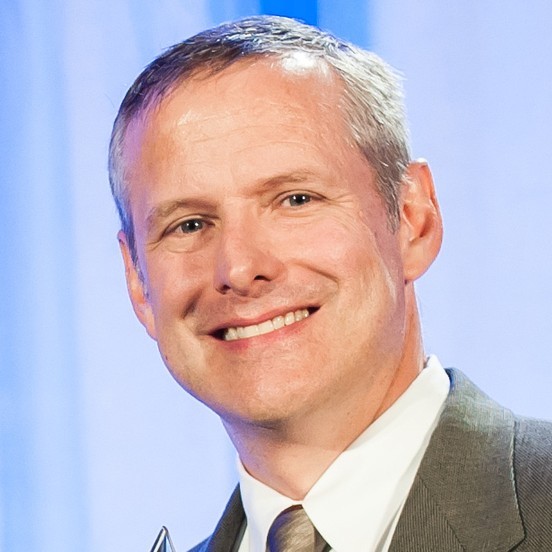 David Glenn (DavidGlennShow.com, @DavidGlennShow) is an award-winning author, broadcaster, editor, entrepreneur, publisher, speaker, writer and university lecturer (now at UNC Wilmington) who has covered sports in North Carolina since 1987.
David Glenn (DavidGlennShow.com, @DavidGlennShow) is an award-winning author, broadcaster, editor, entrepreneur, publisher, speaker, writer and university lecturer (now at UNC Wilmington) who has covered sports in North Carolina since 1987.
The founding editor and long-time owner of the ACC Sports Journal and ACCSports.com, he also has contributed to the Durham Herald-Sun, ESPN Radio, the New York Times, the Washington Post, Raycom Sports, SiriusXM and most recently The Athletic. From 1999-2020, he also hosted the David Glenn Show, which became the largest sports radio program in the history of the Carolinas, syndicated in more than 300 North Carolina cities and towns, plus parts of South Carolina and Virginia.
Chapelboro.com does not charge subscription fees, and you can directly support our efforts in local journalism here. Want more of what you see on Chapelboro? Let us bring free local news and community information to you by signing up for our biweekly newsletter.
Featured photo via AP Photo/David J. Phillip.


